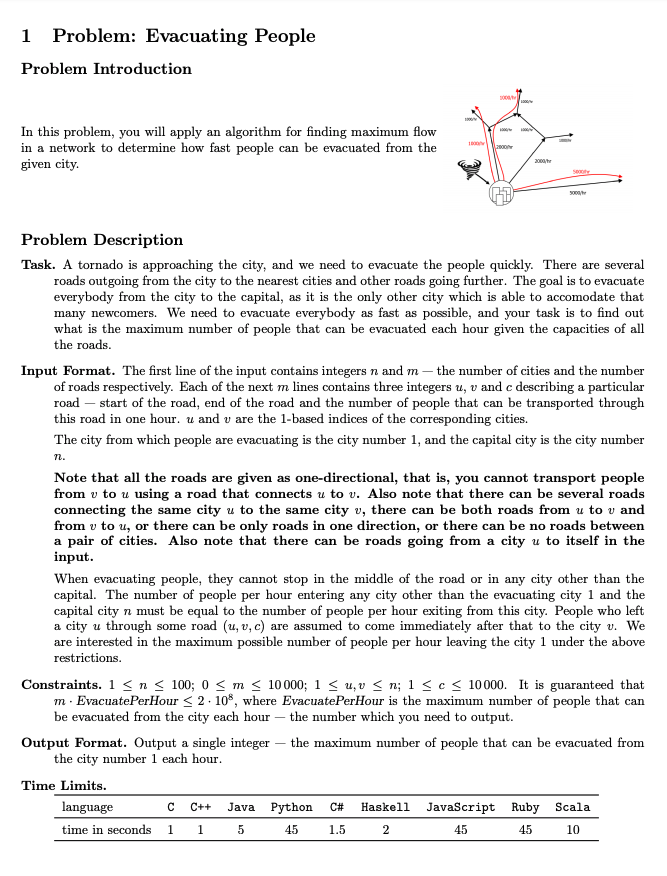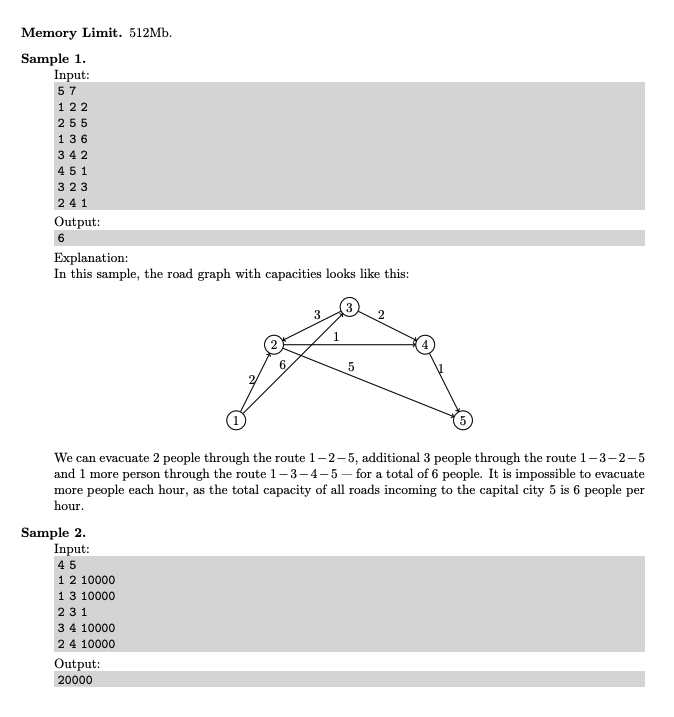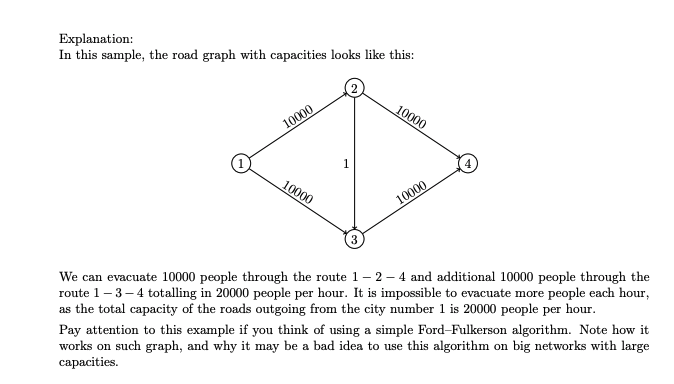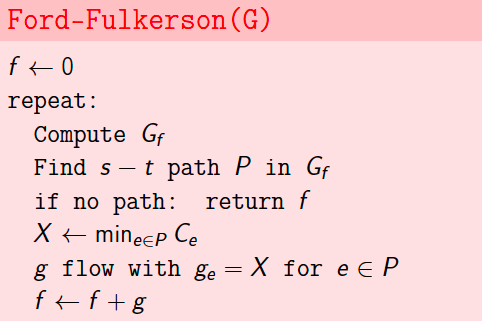1. Evacuating People
Lecture Slides
- Introduction
- Network Flows
- Residual Networks
- Maxflow-Mincut
- Ford-Fulkerson
- Example
- Edmonds-Karp
- Bipartite Matching
- Image Segmentation
Problem



Pseudocode

Solutions
CPP
#include <iostream>
#include <vector>
#include <queue>
#include <unordered_set>
using namespace std;
using VI = vector< int >;
using VVI = vector< VI >;
using Edge = VI;
using Graph = VVI;
using Parent = VI;
using Queue = queue< int >;
using Seen = unordered_set< int >;
auto constexpr INF = static_cast< int >( 1e5 + 1 );
int main() {
int N, M; cin >> N >> M; // N = |V| and M = |E|
const auto S{ 1 }, T{ N }; // source S and sink T
Graph G( N+1, VI( N+1, 0 ) ); // N+1 for 1-based indexing, initialize each edge weight to 0
for( auto i{ 0 }; i < M; ++i ){
int u, v, w; cin >> u >> v >> w; // u -> v edge and (w)eighted capacity of the u -> v edge
G[u][v] += w;
}
auto max_flow{ 0 };
for( ;; ){
Queue q; // BFS from S -> T
Seen seen{ S };
Parent P( N+1, 0 ); // N+1 for 1-based indexing
while( ! q.empty() ){
auto u = q.front(); q.pop();
for( auto v{ S+1 }; v <= T; ++v ){
if( G[u][v] == 0 || ! seen.insert( v ).second ) // if there exists a u -> v edge with capacity > 0, then visit v once
continue;
P[ v ] = u;
q.push( v );
}
}
if( seen.find( T ) == seen.end() ) // no augmented path found from S -> T
break;
auto flow{ INF };
for( auto v{ T }; v != S; ){ // find bottleneck S -> T: ie. the minimum edge capacity along the path
auto u = P[v];
if( flow > G[u][v] )
flow = G[u][v];
v = u;
}
max_flow += flow;
for( auto v{ T }; v != S; ){ // update residual capacities of the edges and reverse edges along the path
auto u = P[v];
G[u][v] -= flow;
G[v][u] += flow;
v = u;
}
}
cout << max_flow << endl;
return 0;
}